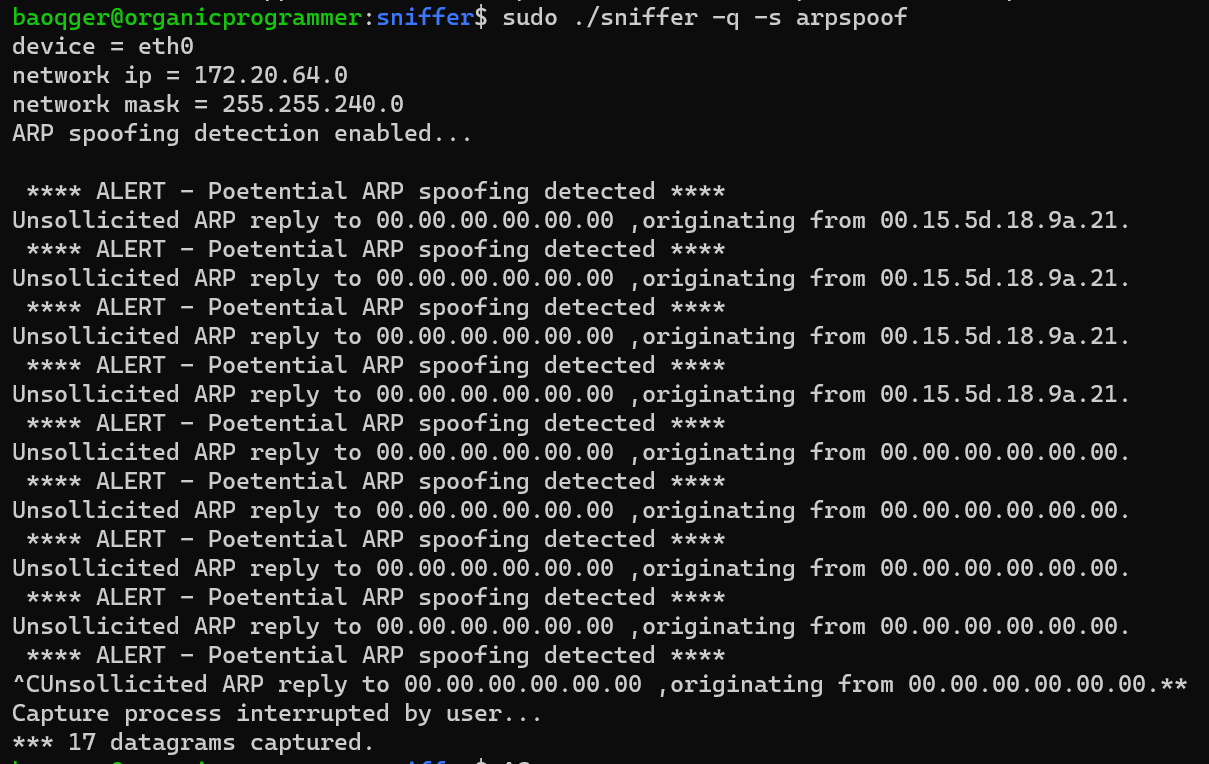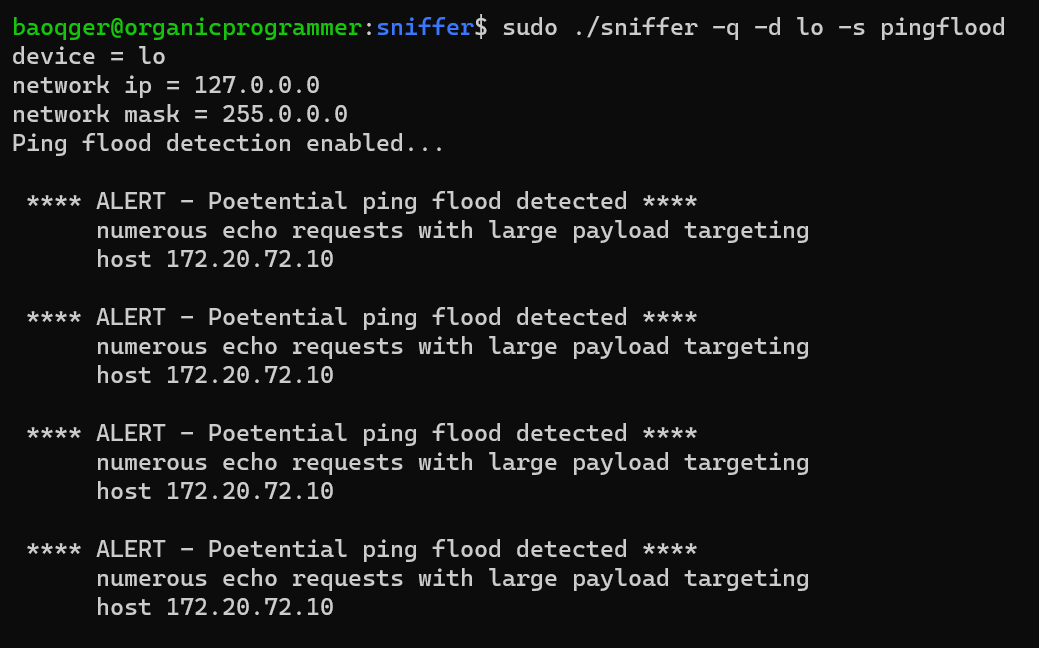Background
In this post, I want to introduce my new project: cPacketSniffer. I worked on it for the past two months. Finally, I worked it out and feel very proud of putting it here!
Motivation
Simply speaking, I want to sharpen my techniques in network programming and Linux system programming. Both of these two topics can lead you to the bottom of computers or software. Feynman said “There is plenty of room at the bottom”, I think this physics law can apply to software as well.
Acknowledgement
It’s very lucky for me to come across this site “Network programming in Linux”, which developed a network packet capturing tool with C++. After confirming that the documents and source code on this site is completed and clear, I decided to refactor it with C language. That’s the starting point for my project cPacketSniffer.
Features
As a network packets sniffer, cPacketSniffer provides the following features:

- Integrate with
libpcapto support: filtering captured packets, capturing packets offline, capturing packets on specific devices and capturing packets in promiscuous mode. - Analyze network packets at low layers of TCP/IP stack, including
Ethernet,ARP,ICMP,IP(IPv4),TCP,UDP, etc. Also one protocol in the application layer:TFTP. - Detect network security attacks:
- ARP spoofing detection.
- Ping flood detection.
- Analyze and track network traffics:
- TCP session tracking and traffic analysis.
- TFTP session tracking and traffic analysis.
The following images demonstrate some typical usages of cPacketSniffer:
Packet Analysis:

ARP Spoofing Detection:

PING Flood Detection:

TCP Session Tracking:

Besides the above network programming-related functionalities, it also covers the following points:
- Develop a generic data structure in C.
- Error handling in C.
- Data encapsulation (object-oriented style programming) in C.
- Manual memory management in C.
- etc.
This article will not cover these points in detail, I will write articles on these topics separately in the future. Please keep watching my blog!
Future work
Now cPacketSniffer can work as a network packet sniffer based on the design. Moreover, it can also serve as a testbed to try experimental features. Next step I plan to try the following ideas:
- Implement the network intrusion detection function.
- Improve the performance with advanced data structures, like binary search trees.
- Memory and cache performance tuning.
- Automatic memory management by Garbage Collection.
- Integrate
ncursesfor Text-based user interface.